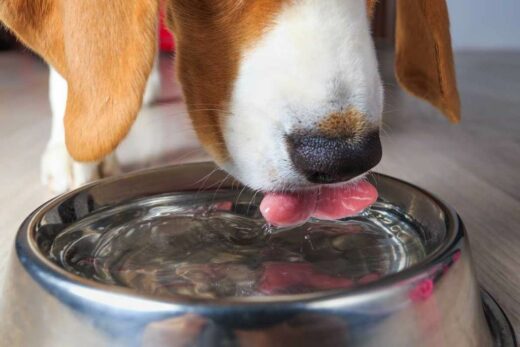It’s the disease that strikes fear in large breed dog owners everywhere. Hip dysplasia affects all dogs but particularly plagues larger dogs, especially St. Bernards, Great Danes, German Shepherds, and Labrador Retrievers.
But your dog doesn’t have to succumb to this disease. Today we are covering all things related to hip dysplasia in dogs. We are going to cover the best methods so you know how to prevent hip dysplasia in dogs. As well, we’ll discuss what hip dysplasia symptoms in dogs look like and how to stop them from becoming worse. So buckle up; here’s how to keep your dog healthy by preventing and treating hip dysplasia.
TABLE OF CONTENTS
1. What is Hip Dysplasia?
2. What Causes Hip Dysplasia?
3. Hip Dysplasia Symptoms in Dogs
4. Diagnosing Hip Dysplasia in Dogs
5. Dog Hip Dysplasia Treatment Options
6. CBD For Dogs With Hip Dysplasia
7. Using CBD to Help Reduce Inflammation
8. Using CBD to Help Your Dog’s Hip Pain
9. Additional Medical Options
10. How to Prevent Hip Dysplasia in Dogs
11. Final Thoughts
What is Hip Dysplasia?
Hip Dys(bad)plasia(formation).
There are two main components that make up a dog’s hip joint: the ball of the femur and socket (acetabulum) of the pelvis. In dogs free of hip dysplasia the ball will fit comfortably into the socket and move along with it without causing friction. Dogs that suffer from hip dysplasia will have the ball either pressing too much against the acetabulum, or it will have dislodged out of the socket. If age-related, it’s likely that smooth cartilage that lubricates the ball and socket has worn down and this allowing the ball to rub against the socket.
Regardless, the results are the same, and that’s bones grinding against each other, wearing each other down until they can’t function properly — even if they were put back into their proper places.
There are quite a number of things that can cause the ball of the femur and the socket of the pelvis to fall out of proper placement and this means that hip dysplasia can affect dogs of any age. You’ve probably heard that it’s only a disease that affects older dogs and this is due to age and inflammation from osteoarthritis (affects 1 in 4). And while it more common in older dogs, hip dysplasia in puppies isn’t that uncommon – we know that dogs as young as 4 months can be affected.
What Causes Hip Dysplasia?
Hip dysplasia overwhelmingly affects older and larger breeds cluing us into some of the main causes of hip dysplasia in dogs.
Genetically prone to hip looseness or muscle laxity
Includes large breeds such as Mastiffs, St. Bernards, bulldogs, American Staffordshire terriers, retrievers, and Rottweilers. As well as some small breeds like French Bulldogs and Pugs.
Rapid weight gain and obesity
If your dog is overweight, stop what you’re doing and check out where they are holding their fat. A lot of breeds carrier extra fat around their back ends which shifts pressure around. Not only can this pressure fall on the hip joint, but it can take away pressure from the anal glands causing them to get impacted. If your dog is overweight you may be cutting their life short.
Nutritional factors
An unbalanced diet that’s missing or lacking omega 3 fatty acids, calcium, iron, vitamin c, glucosamine, and chondroitin can put your dog at risk for developing hip dysplasia.
Diminished Pelvic-muscle mass
This can result due to genetics or lack of exercise*. *For bigger breeds like Great Danes, you should quell heavy exercise for the first year, so be careful to not over-exercise your dog.
Hip Dysplasia Symptoms in Dogs
Hip dysplasia overwhelmingly affects older and larger breeds cluing us into some of the main causes of hip dysplasia in dogs.
The symptoms of hip dysplasia will depend on the severity of the disease and its progression. Young dogs will typically experience acute hip dysplasia for around a year before it is considered chronic and therefore more serious.





